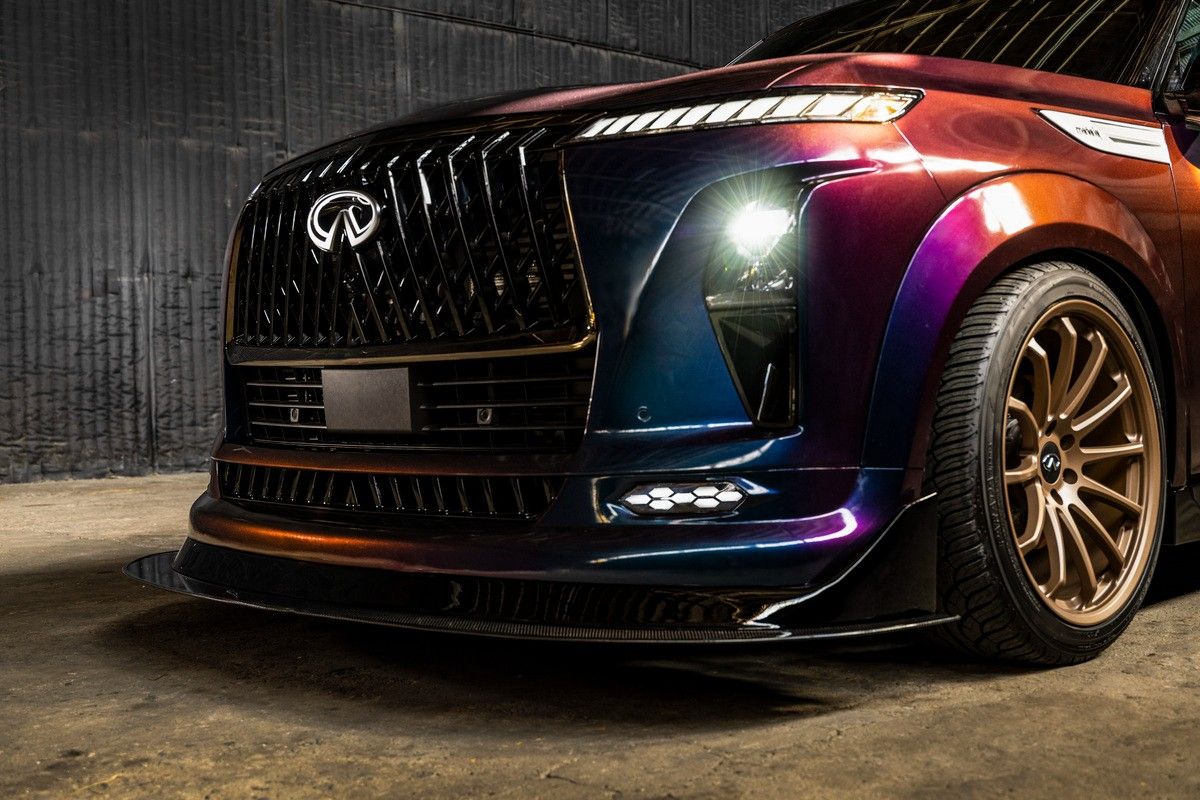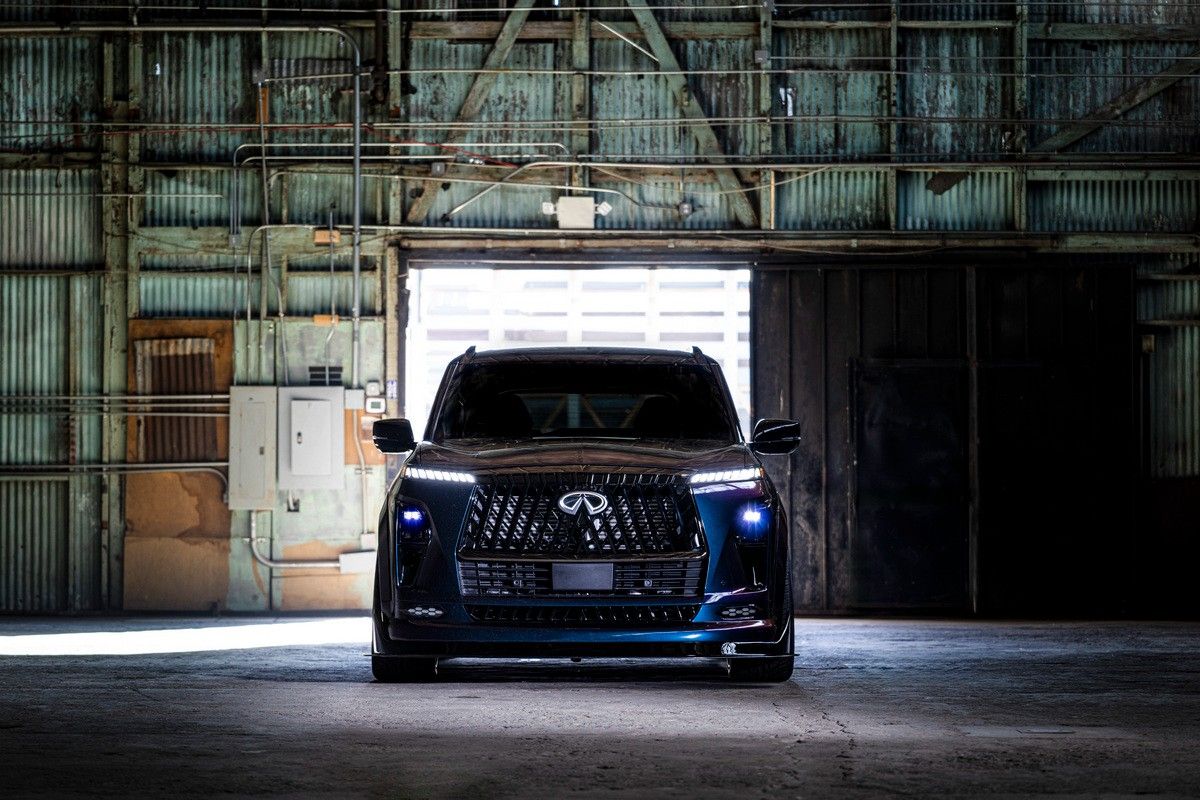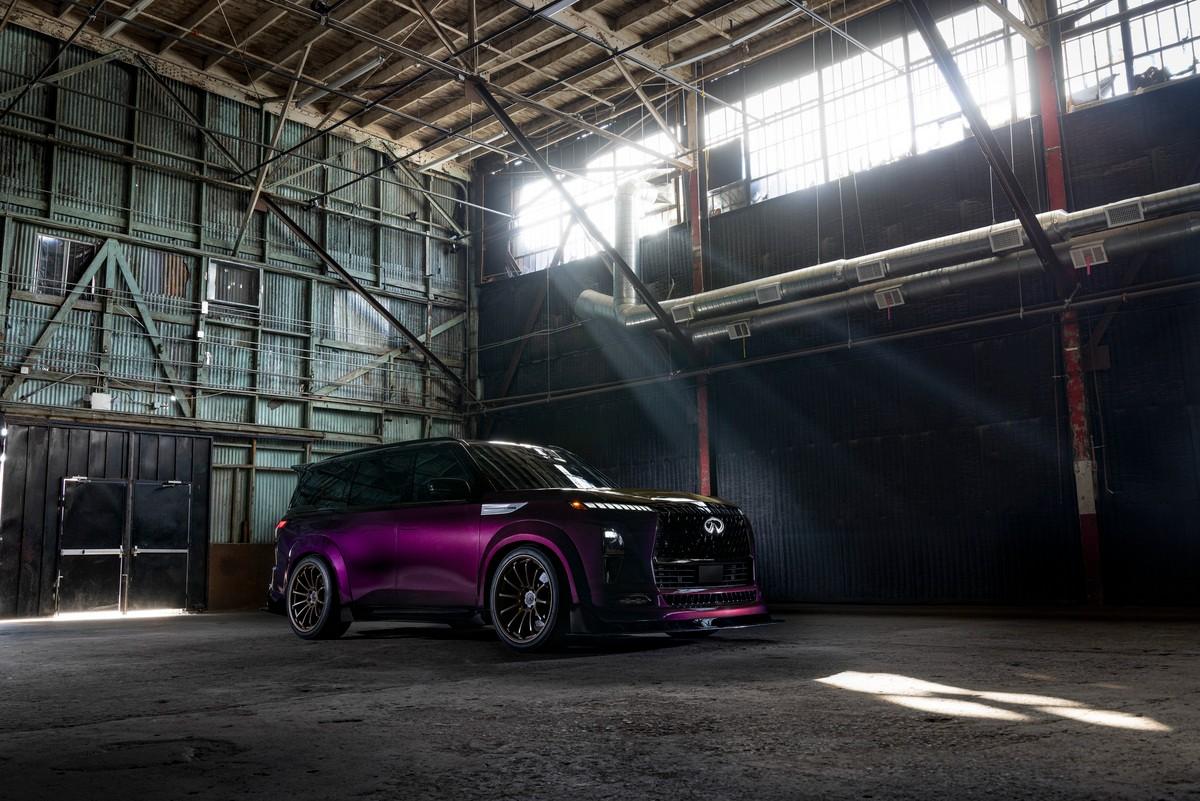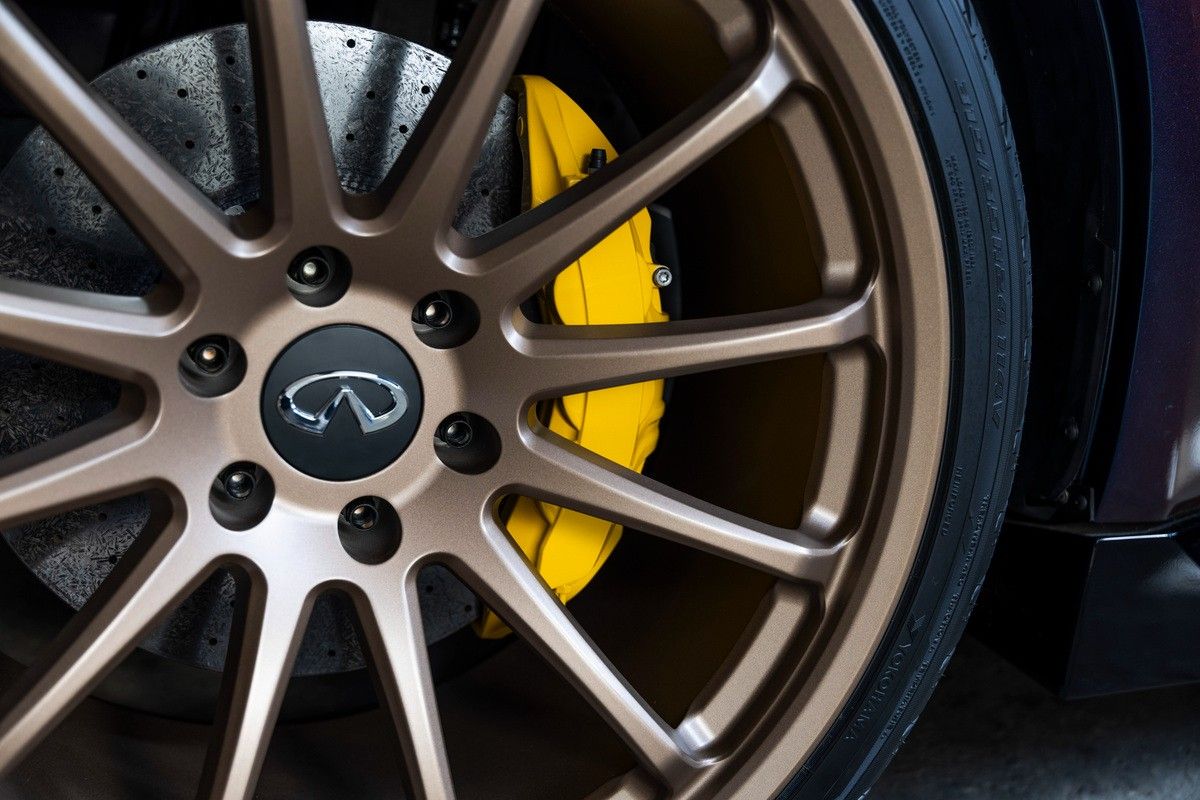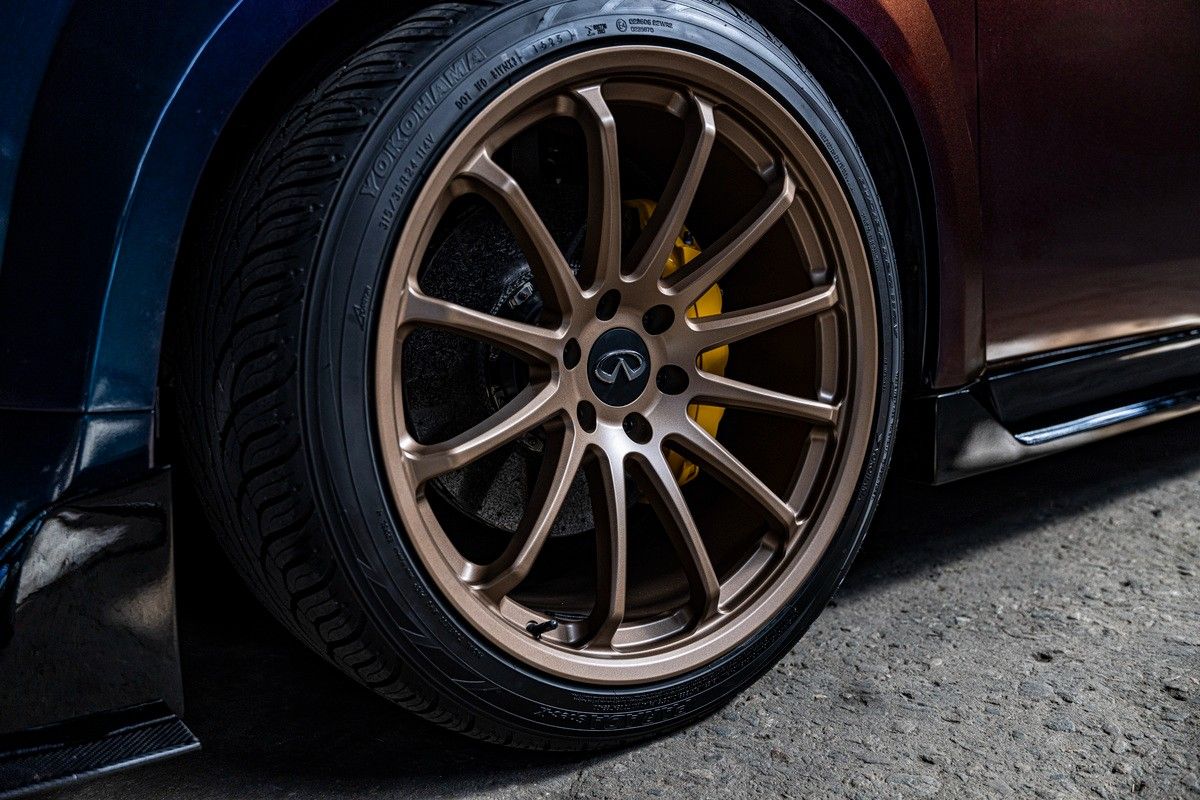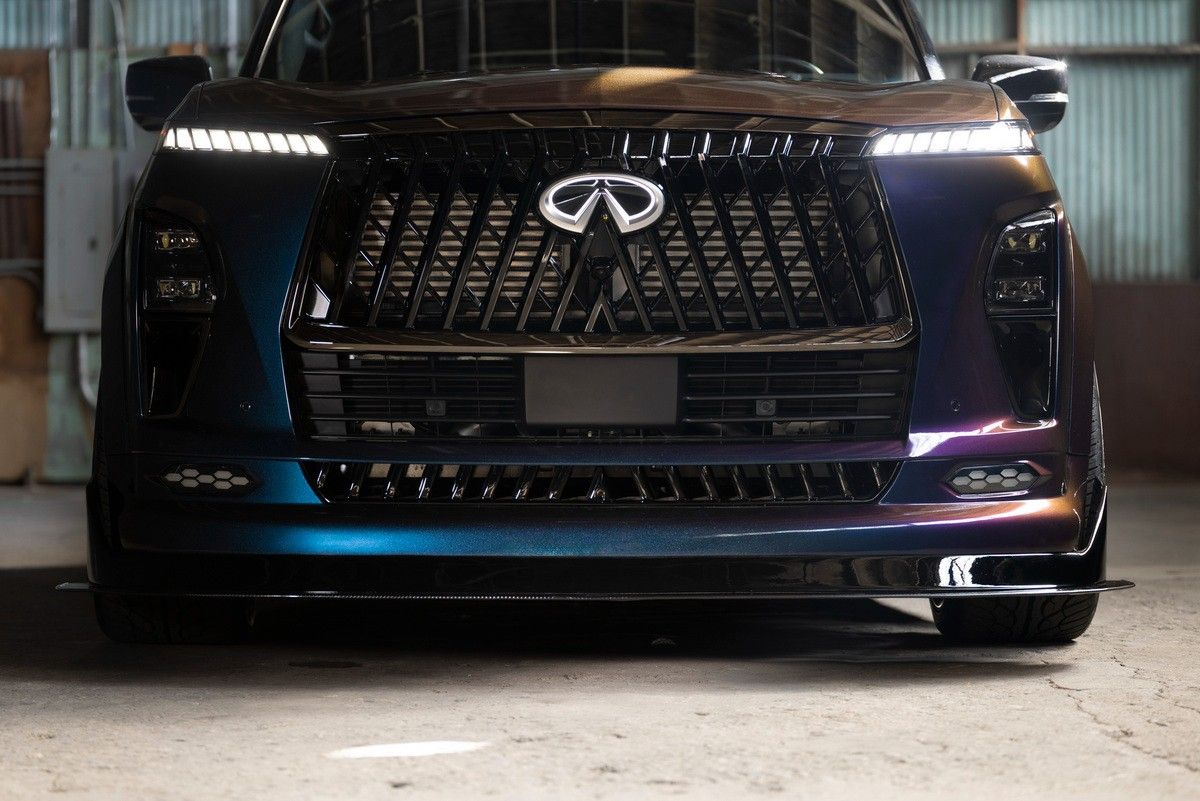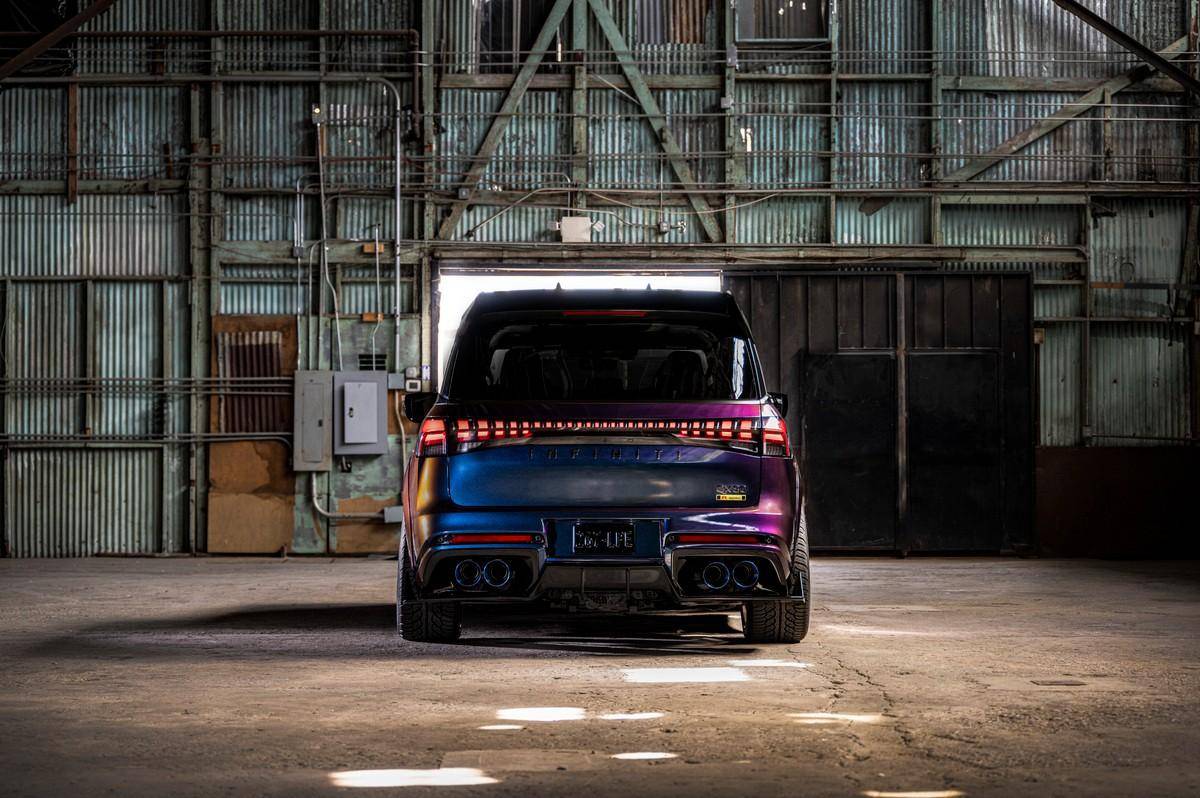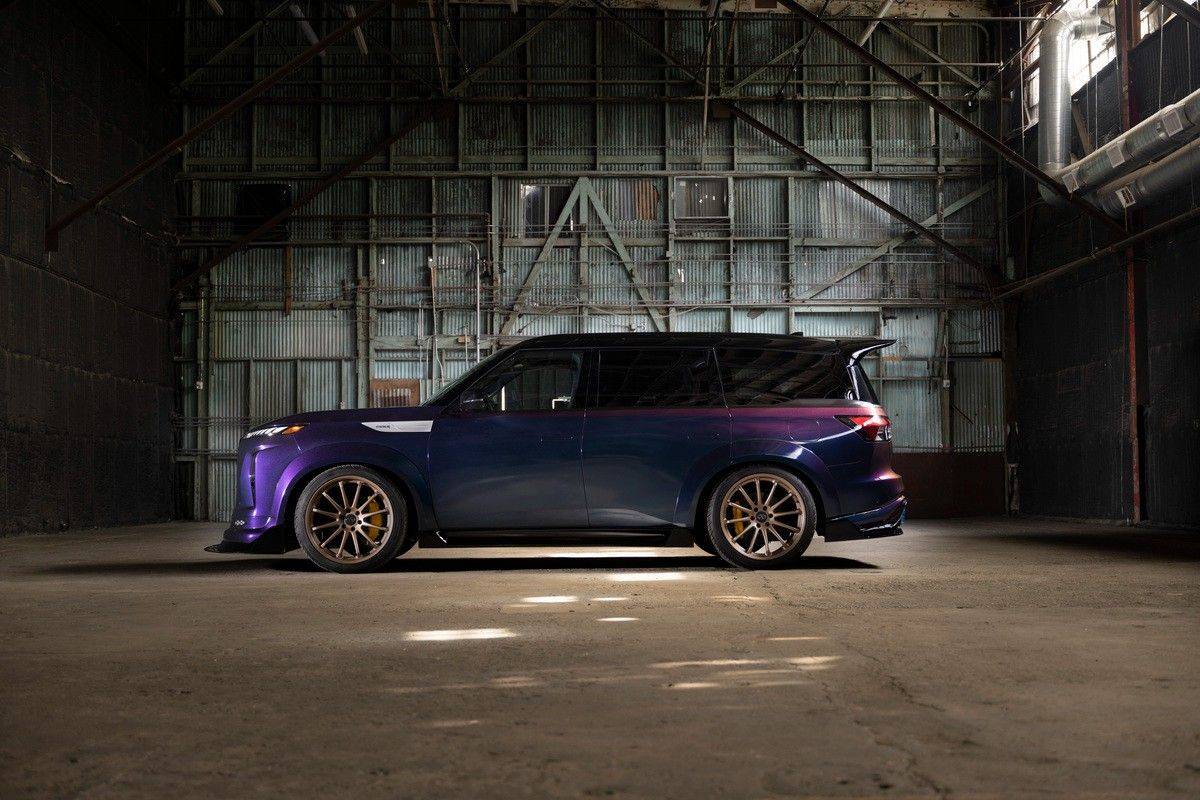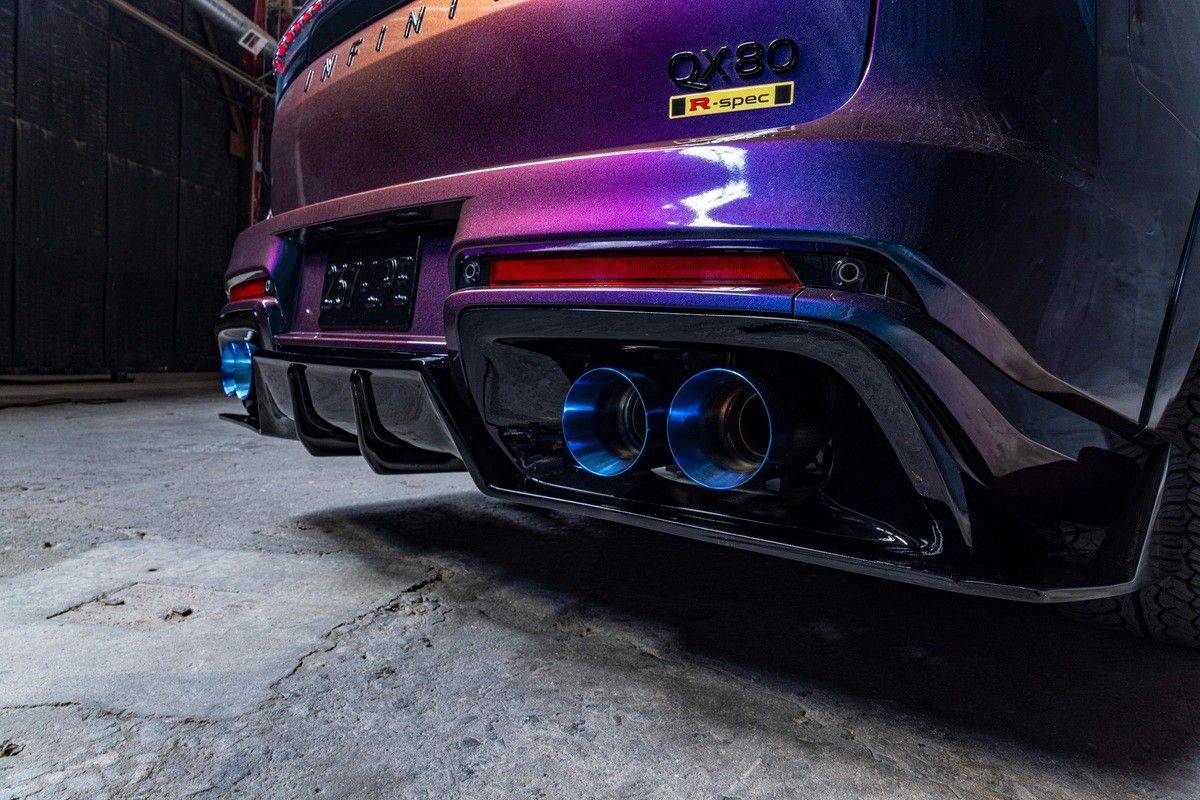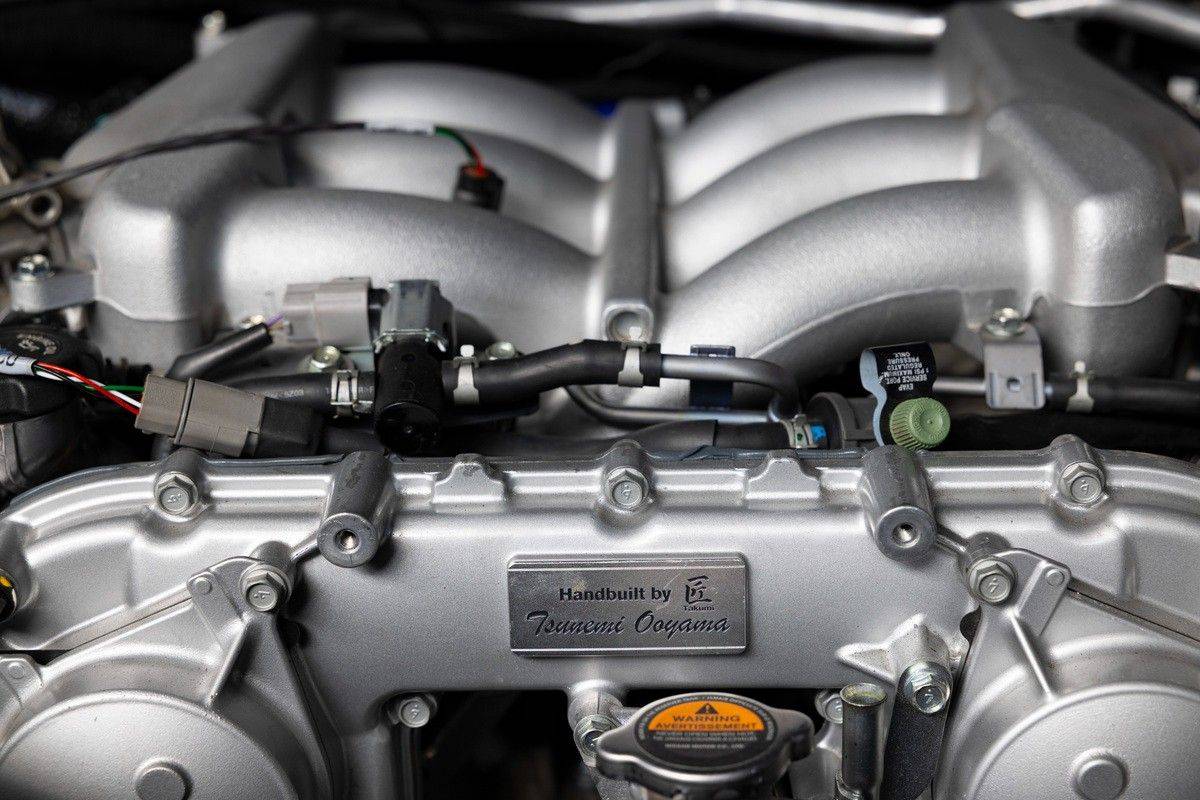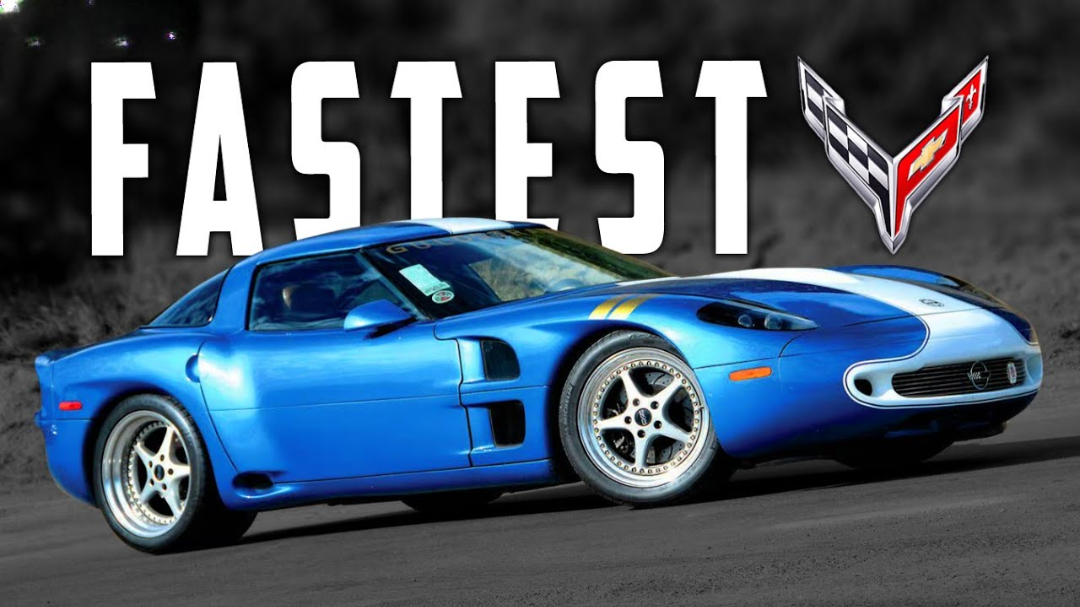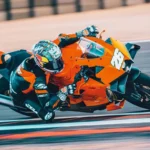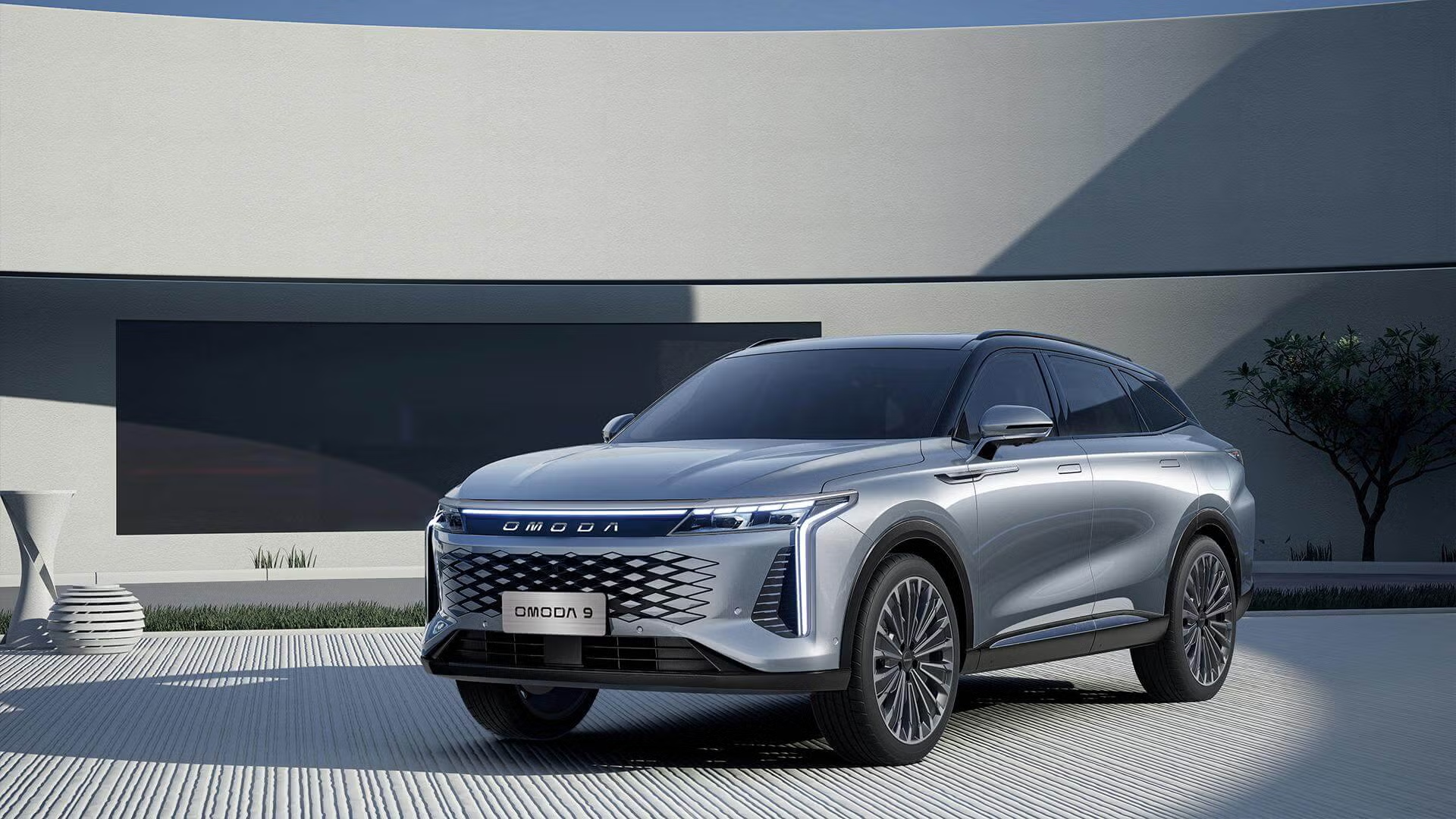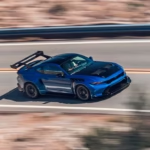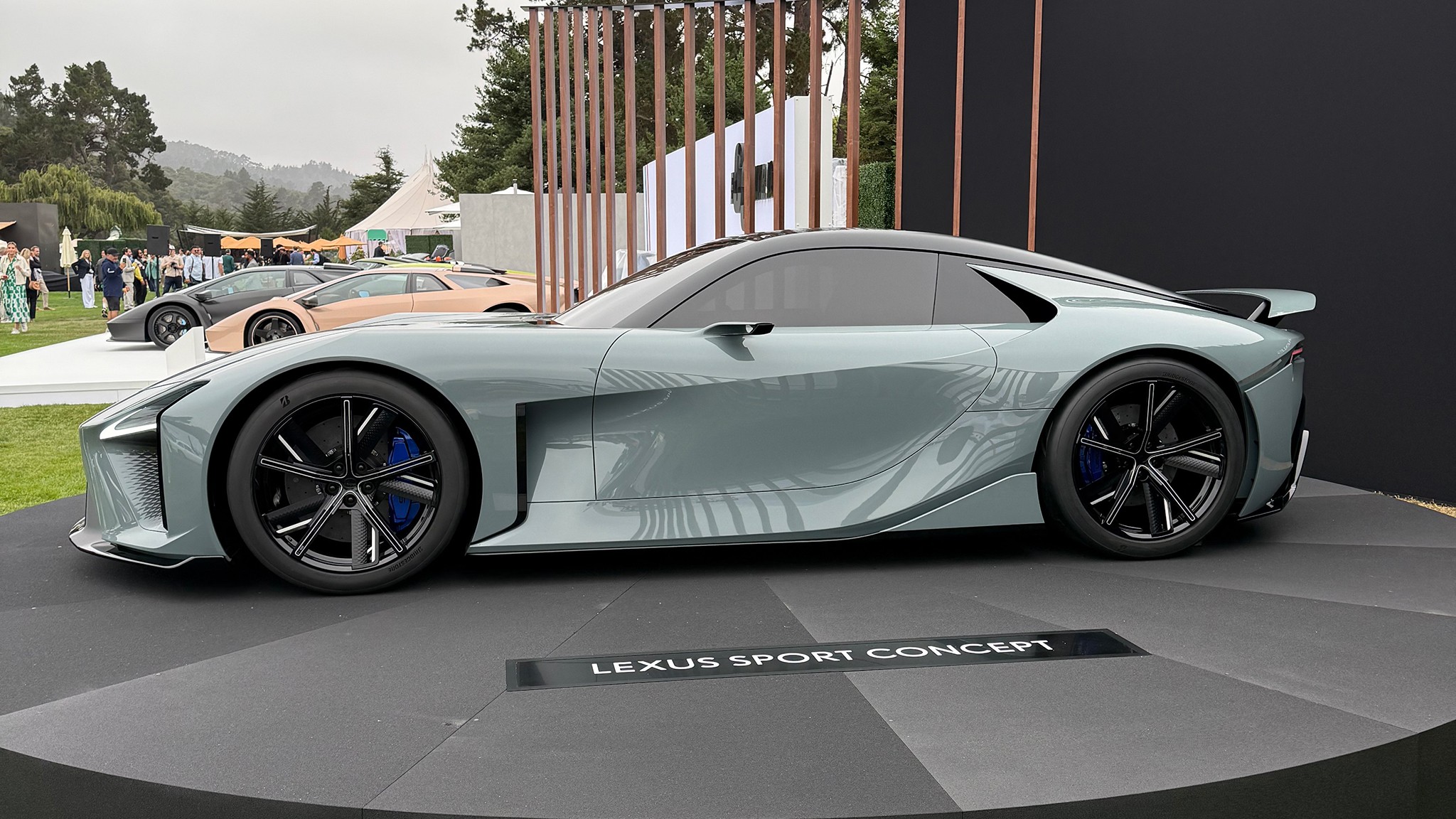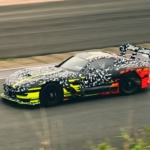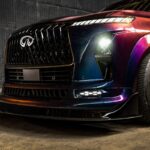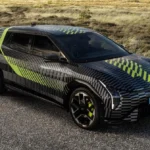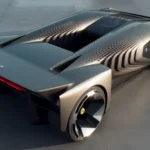INFINITI QX80 R-Spec: When a Luxury SUV Gets a 1,000-HP GT-R Heart Transplant
INFINITI just rolled into SEMA 2025 with something nobody asked for but everyone suddenly wants: a QX80 luxury SUV packing a modified Nissan GT-R engine capable of producing 1,000 horsepower. The R-Spec build isn’t headed to production—it’s a wild SEMA show car that answers the question “what if we made our flagship SUV completely ridiculous?”
This follows INFINITI’s earlier QX80 Track Spec concept from Monterey Car Week, which used a supercharged version of the standard V6 making 650+ horsepower. Apparently that wasn’t extreme enough, so they swapped in the GT-R’s legendary VR38DETT twin-turbo V6 and built it to four-digit power figures.
The Engine Swap That Makes Twisted Sense
The R-Spec ditches the QX80’s standard 3.5-liter twin-turbo V6 (which itself has GT-R DNA and engineering) for the actual GT-R R35’s 3.8-liter VR38DETT engine. INFINITI didn’t just bolt it in stock though—they went full tuner shop on it.
The modifications list reads like a high-end GT-R build: JE pistons, Boostline connecting rods, ARP rod bolts, MOTEC engine management system, ETS exhaust manifolds feeding Garrett G-series turbochargers, custom flex-fuel system with 2,600cc injectors, Fuel Lab fuel pump, twin front-mount intercoolers, and custom exhaust.
That package pushes output to a claimed 1,000 horsepower. INFINITI hasn’t released torque figures, but given the GT-R’s capabilities and these modifications, expect north of 800 lb-ft. For context, the standard QX80 makes 450 horsepower and 516 lb-ft, which already provides strong acceleration for a three-row luxury SUV.
Getting 1,000 horsepower to the ground in a tall, heavy SUV required more than just engine work. INFINITI fitted a custom CNC-machined transmission adapter (the GT-R’s dual-clutch won’t fit the QX80’s architecture), an electronic locking rear differential, and CSF engine and transmission coolers to manage the heat these components will generate under load.
Suspension and Brakes: Borrowed from Godzilla
You can’t have 1,000 horsepower without brakes to match. INFINITI sourced carbon-ceramic brakes directly from the GT-R, though fitting them required custom caliper adapters and rotor hats to work with the QX80’s larger wheel hubs and different suspension geometry.
The suspension received a complete overhaul with custom MCS three-way adjustable coilovers featuring external reservoirs and Eibach ERS springs. The steering rack was relocated with a custom steering shaft, and the front knuckles were modified to correct bump-steer geometry issues that would arise from the lowered ride height.
This isn’t just lowering springs and bigger sway bars—it’s comprehensive suspension engineering to make a luxury SUV handle forces it was never designed to experience. Whether it actually drives well or just looks aggressive sitting still at SEMA is another question.
Wheels, Tires, and That Purple Wrap
The R-Spec rolls on custom 24-inch wheels designed to resemble GT-R wheels, measuring 12 inches wide to accommodate 315/35R24 Yokohama PARADA Spec-X tires. Those are seriously wide tires for an SUV, providing the contact patch necessary to put four-digit horsepower down.
The exterior wears a custom widebody kit to cover those wide wheels, along with functional aerodynamic elements including a custom ARP front splitter. Restyled exhaust finishers, diffusers, fog lights, and badging all reference the GT-R T-Spec Takumi Edition.
The color-shifting wrap pays homage to the Midnight Purple colors that became legendary on R34 and R35 GT-R generations. It’s pure SEMA show car aesthetic—eye-catching, conversation-starting, and completely impractical for actual ownership.
Why INFINITI Built This
Tiago Castro, VP of INFINITI Americas, positioned the R-Spec as exploring “an even more extreme direction” as the brand considers high-performance variants. The key phrase: “challenged ourselves to explore” and “dream of the unexpected.”
Translation: this is a marketing exercise, not a production preview. SEMA show cars serve multiple purposes beyond just displaying wild builds. They generate media coverage (like this article), create social media buzz, demonstrate engineering capabilities, and gauge public reaction to extreme variants.
If the R-Spec generates enough positive attention, INFINITI might greenlight a less extreme but still performance-oriented QX80 variant. Maybe not 1,000 horsepower, but perhaps a 600-700 hp model with upgraded suspension, brakes, and visual differentiation. The earlier Track Spec concept with 650+ hp seems more realistic for potential production.
The Broader Context
The 2025 QX80 represents INFINITI’s attempt to reset expectations in the full-size luxury SUV segment. It’s all-new for 2025, earning an IIHS Top Safety Pick+ rating, Popular Science Best of What’s New award, and various honors from automotive journalist associations.
INFINITI also introduced the QX80 SPORT grade this year, marking the first time the nameplate offered a performance-oriented trim. That version doesn’t have crazy power figures, but it shows INFINITI recognizes demand for more dynamic variants.
The R-Spec and earlier Track Spec concepts extend this thinking to absurd extremes, asking how far you could push the platform if money and production feasibility weren’t constraints. The answer, apparently, is “GT-R engine swapped to 1,000 horsepower.”
Real-World Feasibility (Or Lack Thereof)
Let’s be honest: nobody’s building a 1,000-hp QX80 R-Spec for actual use. The costs would be astronomical, reliability would be questionable at best, and the compromises required would make it terrible as a luxury SUV—which is the QX80’s primary purpose.
The GT-R engine swap alone would run $20,000-30,000 for parts and labor assuming you could even source a VR38DETT core. The turbochargers, fuel system, engine internals, and tuning add another $30,000-40,000. Custom suspension, brakes, transmission work, and bodywork could easily exceed $50,000. You’re looking at $100,000+ in modifications to a $80,000-100,000 SUV.
And for what? You can’t use 1,000 horsepower in a three-row SUV except to impress people at cars and coffee or make wildly unsafe passes on highways. The fuel economy would be abysmal, the ride quality harsh, and the noise levels incompatible with luxury SUV expectations.
What This Actually Signals
Despite the impracticality, the R-Spec tells us something about INFINITI’s positioning ambitions. The brand has struggled for years to differentiate itself from parent Nissan and compete against German luxury marques. Performance variants offer one path toward distinction.
The GT-R connection is strategic—it’s Nissan/INFINITI’s most iconic performance vehicle, with genuine motorsport heritage and enthusiast credibility. Linking the QX80 to GT-R, even tangentially through a one-off show car, creates aspirational associations that benefit the brand.
If INFINITI can execute a production performance SUV—even one with “just” 600 horsepower—that drives well, looks distinctive, and carries GT-R branding or visual references, it could attract buyers who want something different from BMW X7 M, Mercedes-AMG GLS, or Range Rover Sport SVR.
SEMA Showmanship
The R-Spec exists primarily as SEMA theater—something outrageous to draw crowds, generate Instagram posts, and give automotive media something to write about. SEMA has become less about showcasing realistic aftermarket products and more about brands building the wildest possible concepts to win attention in an oversaturated news cycle.
INFINITI joins dozens of manufacturers showing extreme builds that will never see production. Some tease actual products coming soon. Others are pure fantasy. The R-Spec leans toward fantasy, though the earlier Track Spec concept hints at production possibilities down the line.
Whether you find this entertaining or frustrating depends on your perspective. Enthusiasts who enjoy wild builds and appreciate the engineering involved will love it. Pragmatists who want actual products they can buy will see it as wasteful marketing.
